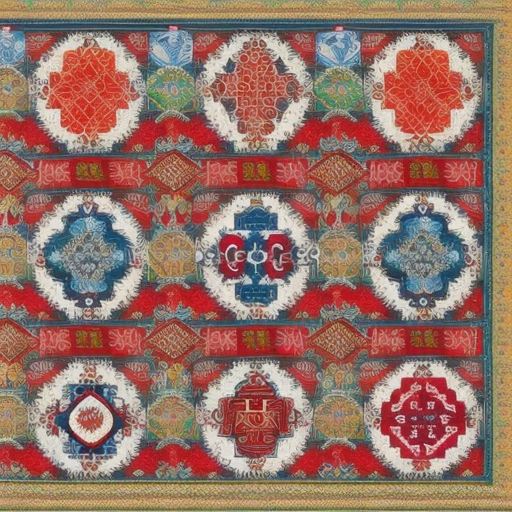Cultural Symbols: A Window into a Society’s Identity
Cultural symbols are powerful representations of a society’s identity, values, and beliefs. They serve as a window into the collective consciousness of a community, providing insight into its history, traditions, and worldview. These symbols can take various forms, including visual images, gestures, sounds, and objects, and they play a significant role in shaping and preserving cultural heritage.
Definition and Importance of Cultural Symbols
Cultural symbols are objects or concepts that hold meaning within a specific cultural context. They are often deeply rooted in history and tradition, and their significance is passed down from generation to generation. These symbols can range from national flags and religious icons to everyday objects and gestures that carry cultural significance.
Cultural symbols are crucial for several reasons. Firstly, they provide a sense of identity and belonging to individuals within a community. They serve as a unifying force, fostering a shared understanding and connection among members of a culture. Secondly, cultural symbols act as a means of communication, conveying complex ideas and values in a concise and recognizable form. They can transcend language barriers and facilitate cross-cultural understanding.
Types of Cultural Symbols
Cultural symbols can be categorized into several types, each representing different aspects of a society’s identity:
1. National Symbols: These symbols represent a nation’s identity and often include flags, national anthems, and emblems. They embody the values, history, and aspirations of a country and are used to foster patriotism and national pride.
2. Religious Symbols: Religious symbols hold deep spiritual significance and are associated with specific faiths or belief systems. Examples include the cross in Christianity, the Star of David in Judaism, and the crescent moon and star in Islam. These symbols serve as a visual representation of religious teachings and provide a sense of spiritual connection for believers.
3. Cultural Icons: Cultural icons are individuals or figures that have achieved significant recognition and influence within a society. They can be artists, musicians, writers, or even fictional characters. Cultural icons often embody certain values or ideals and serve as symbols of inspiration or aspiration.
4. Traditional Symbols: Traditional symbols are rooted in a culture’s history and customs. They can include objects, rituals, or practices that have been passed down through generations. Examples include the Chinese dragon, which symbolizes power and good fortune, or the Native American dreamcatcher, believed to protect against bad dreams.
The Role of Cultural Symbols
Cultural symbols play a vital role in shaping and preserving a society’s cultural heritage. They serve as a link to the past, allowing future generations to connect with their roots and understand the values and traditions that define their culture. Cultural symbols also contribute to the continuity and cohesion of a community, providing a shared language and set of references that bind individuals together.
Furthermore, cultural symbols can be a source of inspiration and creativity. Artists often draw upon cultural symbols to create works that reflect and comment on society. These symbols can also be used in advertising, fashion, and design to evoke certain emotions or associations.
However, it is important to note that cultural symbols are not static and can evolve over time. As societies change and adapt, so do their symbols. New symbols may emerge, while existing symbols may acquire new meanings or lose relevance. It is crucial to understand the context and history behind cultural symbols to fully appreciate their significance.
In conclusion, cultural symbols are powerful representations of a society’s identity, values, and beliefs. They serve as a means of communication, fostering a sense of identity and belonging, and providing a window into a community’s history and traditions. Cultural symbols play a vital role in shaping and preserving cultural heritage, and they continue to evolve and adapt as societies change. Understanding and appreciating cultural symbols is essential for fostering cross-cultural understanding and appreciation.












